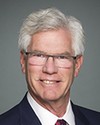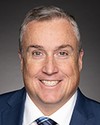Thank you very much, Mr. Chair. I share your passion for well-run meetings, so thank you for that.
Distinguished members of the committee, I'm pleased to be given this opportunity to meet with you today.
Joining me today is Deputy Chief Trish Ferguson, who was the operational lead for the successful resolution of the illegal protest. We're here today to answer questions about the illegal protest that occurred in Ottawa between January 28, 2022 and February 20, 2022.
As the police service of jurisdiction in the nation's capital, our members are well-practiced in keeping the peace during demonstrations.
Every year, hundreds of protests occur in our capital. Our officers are trained to maintain the safety of both the demonstrators and the public at large. The vast majority of these protests are peaceful and lawful, and protesters return home when their point has been made.
This unlawful protest was unprecedented. The protesters brought thousands of vehicles to our city with the full intention of disrupting our capital. After they arrived, many chose to stay and they were clear in their words and actions that they meant to do damage to our community.
Our police service received regular reports of intimidating and threatening behaviour towards residents on a daily basis. We had reports of hate crimes being committed and of wilful disregard of police and court orders. The protesters used their vehicles as tools to back up their behaviour, honking their horns and racing dangerously around the streets in the downtown core.
Despite our attempts to negotiate and despite threats of investigation and enforcement, the illegal and disruptive behaviours continued throughout the protest and became elevated on weekends when more protesters arrived.
Our response as a police service, along with our many partners, was to work to safely manage the disruptions, contain the behaviours and negotiate the protesters out. In the early days, we were able to ensure that no serious injuries, deaths or damage to infrastructure were committed, but that's not the standard of policing any resident of our city or any Canadian would expect.
As a police service, we understood quickly that we needed assistance from all levels of government in the form of legislative powers and policing resources if we were to safely remove this unlawful protest from our streets.
It's important that this committee understand and appreciate the negative impacts this behaviour had on our entire community and our businesses, and especially the impacts on our vulnerable, marginalized, indigenous, 2SLGBTQIA+ and racialized communities.
Our Centretown is a diverse, proud and vibrant place. During the protest, we saw clear signs of hate, such as swastikas, anti-government sentiment, leaders posting threatening language on social media and other various forms of social disorder. It shook the community's faith and confidence in the ability of police and government to keep them safe. We have seen the same effects in cities such as Calgary, Windsor and in Coutts, Alberta, where similar protests were held.
Our goal from the outset was always to remove this protest safely. Doing that required careful coordination between all of our policing partners to develop a strategy that would ensure a safe resolution. All three levels of government responded with legislative measures that aided our strategy. I want to thank the City of Ottawa and the Ontario government for the changes brought forward. I also want to thank the federal government for invoking the federal Emergencies Act.
From a policing perspective, the legislation provided the OPS with the ability to prevent people from participating in this unlawful protest; to restrict people from travelling to any area where the unlawful protest was taking place; to secure protected places and critical infrastructure; to create and maintain the secured area to prevent people from violating the act and safely remove people who were attempting to do so; to go after the money funding the protest; and to require third parties to assist us in removing the heavy vehicles that were clogging streets and creating a safety hazard. It was a critical piece of our efforts, but it was only one piece.
Another critical piece was the rallying of police resources from the RCMP, the OPP and police services from across Canada. I want to thank them all for their support.
As you saw, once we had all of those authorities and those resources in place, we were able to implement a methodical police operation between February 17 and February 20 with an integrated command led by the Ottawa Police Service, the Royal Canadian Mounted Police and the Ontario Provincial Police to safely remove the protest.
In total, there were 230 arrests, and 118 people were criminally charged with more than 400 criminal counts. Hundreds of provincial offence notices were issued. Cases are still moving through the courts, and multiple investigations are ongoing.
In a democracy such as Canada, there is no doubt that a discussion and assessment on the appropriateness of the invocation of the Emergencies Act, which provided police broader powers, is important. I am pleased to be here to contribute to that discussion.
I can tell you that police chiefs across the country are watching this discussion because they know that similar situations could occur or are occurring in their jurisdictions. I have spoken to many of them who have sought out advice.
Finally, I want to reiterate my pride in all of the police members who worked on this operation, including the members who came from across Canada to assist us. This was truly a Canadian effort and it showed the vital role that police play in maintaining our democracy and keeping our residents safe.
Deputy Chief Ferguson and I look forward to answering your questions today.



